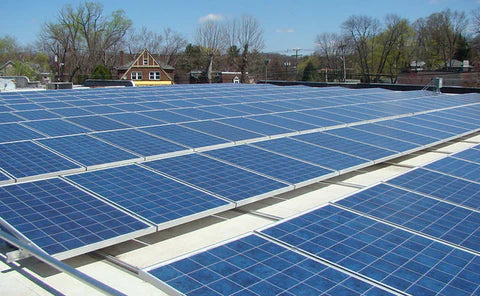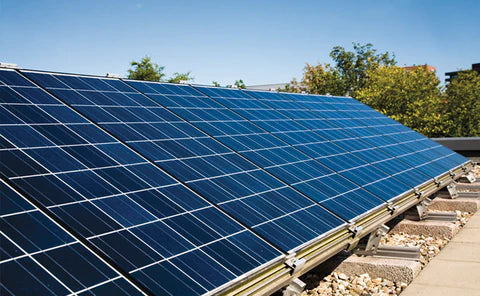
Mistakes you need to avoid when design your solar system
With the development of PV technology, install a solar system is more and more common in people`s house. Today, we`re going to look at the most common mistakes we see from beginners who are just starting to design their own solar system. Here are some mistakes we found from solar starters when design their own solar system:
1: Confusing off-grid and grid-tie solar
Solar power allows you to generate your own energy, which means you won’t pay for power from the utility grid. People assume this means they will be “going off the grid,” but that’s not accurate. In reality, most people are looking for a grid-tied solar system.
Here’s the distinction: your panels generate energy, but you need a way to store that energy for later use. If you have access to power lines, you can store the energy you generate in the utility grid. The utility company will credit you for extra power produced, and allow you to pull from the grid when you need it.

Off-grid properties have no access to power lines, so they need another method to store energy. That means off-grid systems need a battery bank to function. Batteries are expensive, but with no option to store power in the grid, they are mandatory for off-grid systems. The bottom line is that saving money and being independent from the grid are mutually exclusive. Batteries eat into your ROI (return on investment), and grid-tied properties don’t need them. You don’t need to go “off the grid” to get the benefits of solar power. If your property has access to power lines, grid-tied solar is the smartest option.
2: Solar prevents power outages?
You’re generating your own energy, so the lights should stay on during a power outage, right? Unfortunately, that’s not the case with grid-tied solar systems. Although the power originates from your panels, it is still stored in the public utility grid.
When the grid power goes out, so does yours, because there’s no infrastructure to feed that power to your property. The remedy for this is a grid-tied system with battery backup. When the power’s on, it functions like a normal grid-tied system. During an outage, a small backup battery bank kicks in to keep the lights on. It costs a bit more, but the peace of mind is invaluable, especially if you live somewhere with extreme weather conditions or unreliable power from the grid.
3: Leasing
Solar power is a sound investment if you own your system.When you lease your system from a third party through a Power Purchasing Agreement (PPA), the value of that investment pretty much vanishes.We can think of a few reasons why leasing is a bad deal.
The first thing to understand is the lender owns the system, which means they’re eligible to claim all the incentives. You won’t see a penny from the 30% federal tax credit or any local rebates. After you’ve been squeezed out of the incentives, you’ll also pay a premium rate to lease the panels, which includes interest. In all, you might find you paid twice as much to lease the system as it would cost to finance and own the system yourself. Leasing also makes it more challenging to sell your home. You have to transfer the lease to the buyer upon sale. Or, you can pay off the remainder of the lease balance and add that amount to your asking price. Both options limit the pool of potential buyers for your home.

4: Not planning ahead
I brought up the fact that most panels are warrantied for 25 years. That’s a long time to go without any big changes in your life. When people start planning their system, everyone thinks about what they need right now. Not as many people think about how their needs will change in the future. What happens when you have kids, build a new workshop, or buy an electric car that needs charging? You’ll start consuming more energy. So we always tell people to look to the future when you start planning your system. You should think about some thing in advance. For example: Do you have space to expand the installation if necessary? Is your system designed to be expandable? etc.
How to avoid these solar mistakes?
Do as much research as you can to account for all possible variables. But before you pull the trigger on that big investment, run that design by a solar designer first. An experienced set of eyes could help you catch some potentially costly mistakes before it’s too late. And for further information, keep following with XINPUGUANG:
Facebook: Xinpuguang Solar Panel Instagram: xinguang_solar
Pinterest: XinpuguangSolarPanels
Homepage: https://xinpuguangsolar.com
Email address: Philip@isolarparts.com
- A escolha de uma seleção resulta em uma atualização completa da página.
